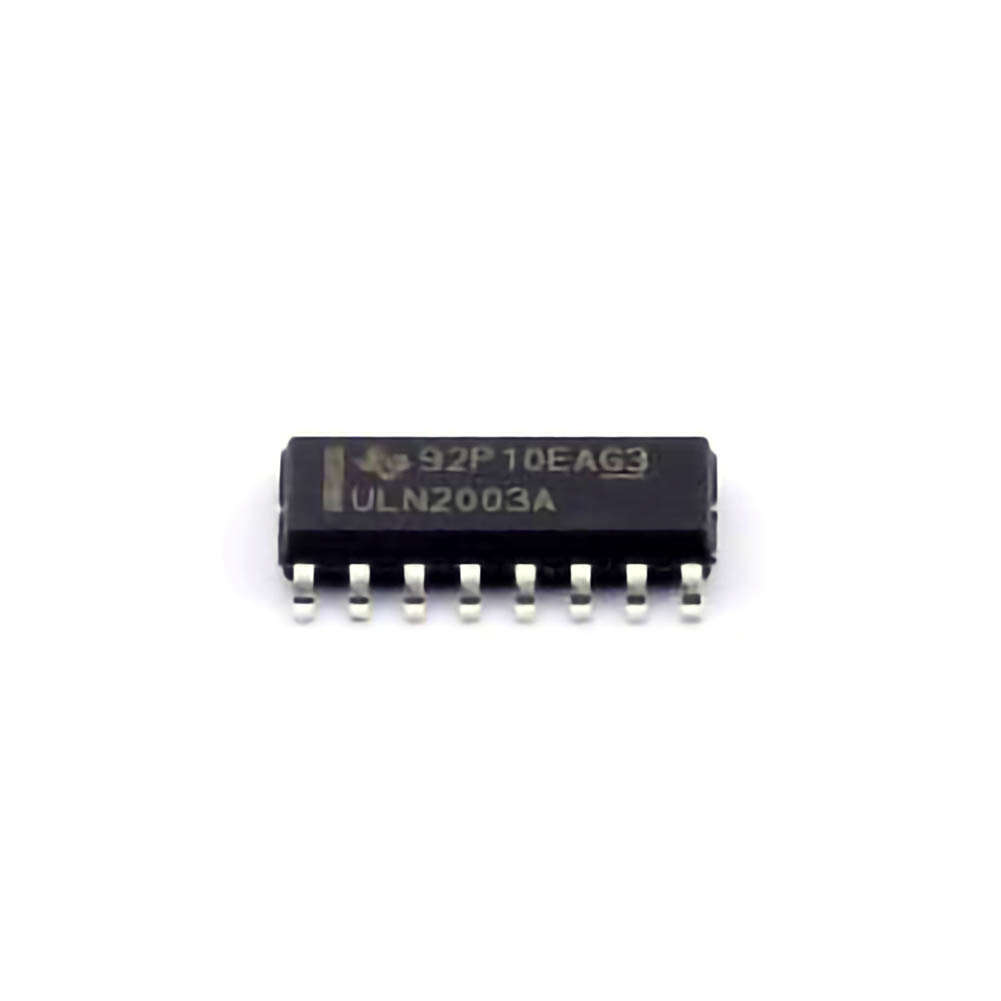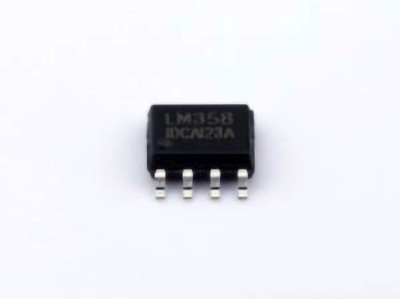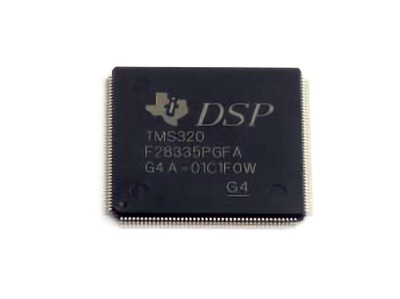
Understanding the ULN2003A DR and Its Common Issues
The ULN2003 ADR is a high-voltage, high-current Darlington transistor array designed to drive stepper motors, relays, and other inductive loads in a variety of electronic circuits. With seven open-collector Darlington pairs, it can handle voltages up to 50V and currents up to 500mA per channel, making it a reliable choice for motor control, switching, and general-purpose Power driving.
Despite its robustness, users may face certain challenges when using the ULN2003AD R. In this section, we will explore some of the most common issues and possible solutions.
1. ULN2003ADR Not Turning On or Off Properly
Symptoms:
One of the most common issues with the ULN2003ADR is that the connected load (e.g., a stepper motor or relay) fails to turn on or off as expected. This could be a result of improper triggering or insufficient voltage at the input pins.
Possible Causes:
Low Input Voltage: The ULN2003ADR requires a certain voltage at its input pins to turn on the corresponding Darlington pair. If the input voltage is too low, the transistor will not fully switch on, leading to malfunctioning of the connected load.
Incorrect Wiring: Another common issue could be incorrect wiring of the ULN2003ADR to the controlling microcontroller or driver circuit.
Faulty Control Signals: If the control signals from the microcontroller are not of the correct logic level (high or low) or timing, the ULN2003ADR may not respond as expected.
Solutions:
Ensure that the input voltage at the pins of the ULN2003ADR meets the required threshold (typically 5V or more for reliable operation).
Check the wiring configuration. The inputs (pins 1–7) should be connected to the output pins of your microcontroller or driver. The corresponding output pins (pins 10–16) should be connected to the load (e.g., relay or motor).
Confirm that the control signals from the microcontroller are stable, and within the expected range of HIGH (5V) or LOW (0V), depending on your application.
2. Excessive Heat Generation
Symptoms:
If the ULN2003ADR overheats, it could shut down or cause damage to the IC and the surrounding components. Excessive heat generation is a critical issue as it can compromise both performance and longevity.
Possible Causes:
Overloading: If the current drawn by the connected load exceeds the rated current capacity of the ULN2003ADR (500mA per channel), it will heat up. Prolonged overcurrent conditions can lead to thermal runaway.
Insufficient Heat Dissipation: The ULN2003ADR may generate significant heat when driving large inductive loads like motors or relays. Without proper heat sinking or ventilation, the temperature could rise beyond safe limits.
Continuous Operation at High Current: Running the IC continuously with high current without a proper cooling solution can quickly lead to overheating.
Solutions:
Always check the specifications of your load to ensure that the current does not exceed 500mA per channel.
Use a heat sink or proper ventilation around the ULN2003ADR to ensure effective heat dissipation.
Consider using a PWM (Pulse Width Modulation) signal to drive the load intermittently rather than continuously, especially for high-current loads like motors.
Use current-limiting Resistors or fuses in the circuit to prevent overcurrent situations.
3. Unstable Outputs or Erratic Behavior
Symptoms:
In some cases, the output behavior of the ULN2003ADR can be erratic or unstable, with the load turning on and off unpredictably or failing to activate altogether.
Possible Causes:
No Flyback Diode on Inductive Loads: When switching inductive loads like motors or relays, the lack of a flyback diode can cause voltage spikes due to the inductive nature of these loads. These spikes can disrupt the operation of the ULN2003ADR and may even damage the IC.
Incorrect Grounding: Improper grounding of the ULN2003ADR can result in voltage fluctuations that lead to erratic operation of the IC.
Input Signal Noise: Noise on the input control signals can cause the ULN2003ADR to behave unpredictably, especially if the input logic levels are not clean or stable.
Solutions:
Always connect a flyback diode (such as 1N4007 ) across inductive loads to protect the IC from voltage spikes.
Ensure a solid and reliable ground connection for the ULN2003ADR and all associated components in the circuit.
Use noise filtering techniques such as capacitor s (typically in the range of 100nF) on the input pins to filter out unwanted noise.
Advanced Troubleshooting and Best Practices for ULN2003ADR
While the common issues discussed above can often be resolved through simple fixes, there are additional advanced troubleshooting techniques and best practices that can improve the performance and longevity of your ULN2003ADR in more complex applications. Let’s take a closer look at some of these considerations.
4. Current Saturation and Load Compatibility
Symptoms:
If the ULN2003ADR is used in circuits requiring precise current control, it may not provide the desired results. This is especially true when driving high-power loads like motors, where fine control over the current is essential.
Possible Causes:
Current Saturation: The ULN2003ADR has a saturation voltage drop when current flows through the Darlington pairs. This voltage drop increases as the load current rises, causing inefficient operation.
Incompatible Load: If the load requires more current than the ULN2003ADR can supply, or if the voltage characteristics of the load do not match the IC's specifications, it may lead to poor performance.
Solutions:
For high-current or precision applications, consider using an alternative driver IC with lower saturation voltage and better current control capabilities, such as the ULN2803 or a MOSFET-based driver.
Make sure the load is compatible with the current and voltage specifications of the ULN2003ADR. This is especially important when driving large motors or multiple relays in parallel.
5. Power Supply Issues
Symptoms:
Inadequate power supply to the ULN2003ADR can lead to a variety of issues, including failure to activate the load, reduced current driving capability, or even a complete malfunction of the IC.
Possible Causes:
Voltage Drops: The supply voltage may drop below the operational threshold of the IC, especially when multiple devices are powered from the same source.
Insufficient Current Capacity: If the power supply cannot provide enough current to both the ULN2003ADR and the load, the system may experience voltage instability or inadequate performance.
Solutions:
Ensure the power supply can provide sufficient current and voltage to both the ULN2003ADR and any loads. A dedicated power supply for the ULN2003ADR is often recommended to prevent voltage drops when switching large loads.
Use decoupling capacitors (typically 100µF and 0.1µF) close to the power input pins to stabilize the voltage and prevent noise or dips.
6. Systematic Debugging Steps
When troubleshooting the ULN2003ADR, it’s essential to follow a systematic approach to narrow down the root cause of the issue:
Check Input Signals: Ensure that the input logic levels are correct and consistent. Use an oscilloscope to verify the timing and voltage levels of the input signals.
Inspect Power Supply: Measure the power supply voltage at the IC’s VCC pin to ensure that it is stable and within the recommended range (typically 5V to 12V).
Test with Known Good Load: If possible, test the ULN2003ADR with a simple load (like an LED or low-power relay) to rule out problems with the load itself.
Verify Ground Connections: A poor ground connection can cause erratic behavior. Check that the ULN2003ADR’s ground pin is securely connected to the circuit’s common ground.
7. General Best Practices
Use Protective Diodes : When switching inductive loads, always use flyback diodes to protect the ULN2003ADR from voltage spikes.
Monitor Temperature: Always monitor the temperature of the IC during operation, especially when switching high-current or inductive loads. If necessary, incorporate heat sinks or active cooling solutions.
Choose Appropriate Load Resistors: Use current-limiting resistors where necessary to ensure that the IC operates within safe limits and does not overheat.
By following these best practices and troubleshooting steps, you can significantly reduce the likelihood of issues and extend the lifespan of the ULN2003ADR in your projects.
In conclusion, the ULN2003ADR is an incredibly versatile and robust IC that can drive a wide range of loads. However, like all electronics, it is essential to troubleshoot and optimize its use to avoid common issues such as overheating, erratic behavior, or incorrect switching. By understanding its limitations and implementing the right solutions, you can ensure reliable operation and smooth performance for all your motor control and switching applications.
If you are looking for more information on commonly used Electronic Components Models or about Electronic Components Product Catalog datasheets, compile all purchasing and CAD information into one place.


